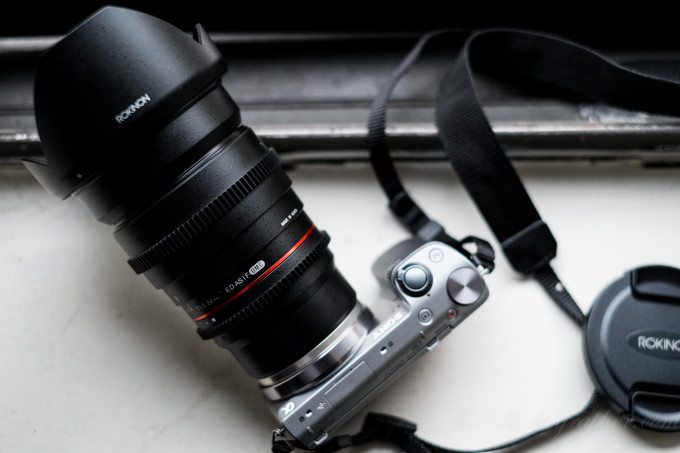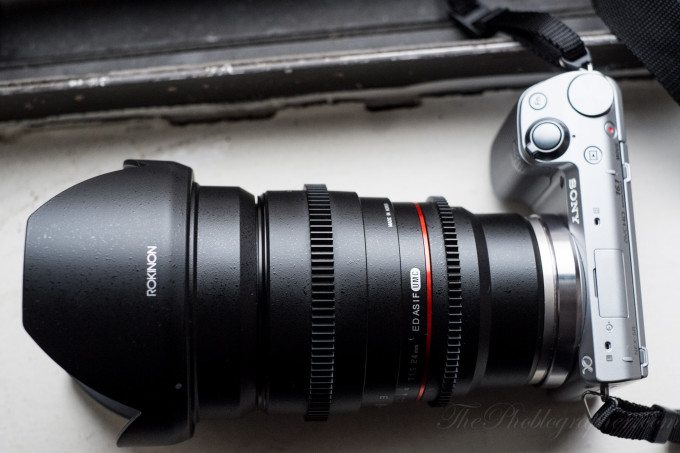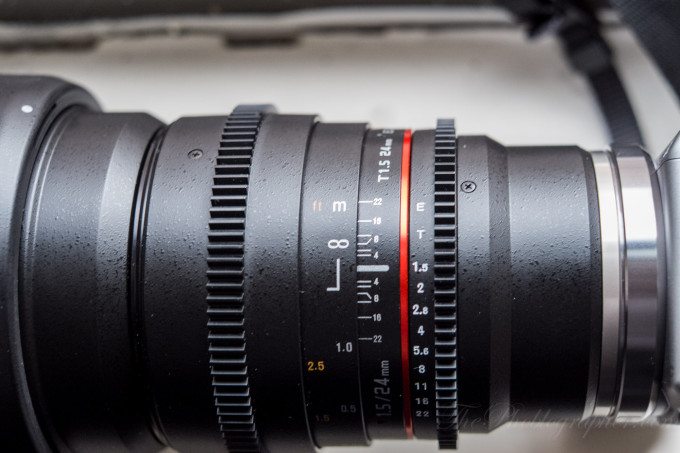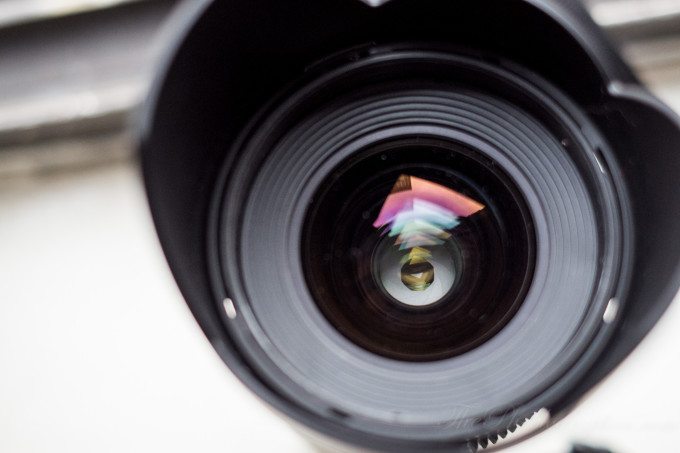Last Updated on 03/19/2013 by Chris Gampat
Rokinon recently announced that all of their cinema lenses would be available for NEX cameras, and then one day the entire lineup was all set and ready. While reviewing the Sony NEX 5R, we called in the Rokinon 24mm T1.5 cinema lens to test. Why specifically on the 5R? The BBC used the camera’s predecessor to film a web series and many people who purchase the 5 series of cameras usually end up using it as a video camera.
And why not? It has full 1080p out, 1080 60p and 1080 24p HD video footage. Plus it’s a Sony sensor.
Rokinon has been well known for their lens quality at a more affordable price. Very rarely does a lens of theirs go through our hands that we haven’t loved. But is this lens any different?
Pros and Cons
Pros
– Beautiful ergonomics
– Smooth focusing and Aperture ring but not too smooth
– Nice textured body
– Excellent image quality, very sharp when stopped down and still pretty darn sharp wide open
– Contrasty look to the images
Cons
– Quite a large lens when NEX cameras are so small. It would surely do better on a camcorder.
Gear Used
For this review, we used the Sony NEX 5R, IndiPro HD EVF, Rode VideoMic, Light Craft Workshop Fader ND Mk II, and Rokinon 24mm T1.5 lens.
Tech Specs
Specs borrowed from the Adorama listing of the product.
| Focal Length | 24mm |
| Mount | Sony E |
| Aperture | Maximum: T1.5 Minimum: T22 |
| Iris Blades | 8 |
| Angle of View | Full Frame: 84.0deg. APS-C: approx. 61.1deg. |
| Minimum Focus Distance | 9.84″ / 25cm |
| Lens Construction | 13 element in 12 groups (4 elements low-dispersion glass, 2 Aspheric elements) |
| Filter Diameter | 77mm |
| Dimensions | 3.82×3.27″ / 9.7×8.3cm |
| Weight | 1.5lbs / 0.68kg |
Ergonomics
First off, take note that this lens is extremely big–it’s typically too big for an NEX style camera but not for a camcorder. The exterior has a nice texturing to it all over the body. Most of the lens is dominated by a manual focusing ring with gear teeth for a follow focus system. Secondary to this is the aperture ring with gear teeth as well.
To figure out distances, the user needs to look to the side of the lens in order to know if they’re at T1.5, T5.6 or anything else. Like other cinema lenses, there is also a very long focus throw.
The lens sports a 77mm filter thread for Fader NDs and also has eight aperture blades. This ensures the smooth bokeh that you can see in the image quality. The front element isn’t too large either, but man is that lens hood big.
Build Quality
Like all Rokinon lenses, the quality of the build is really quite solid. These lenses feel a bit like Nikon’s but don’t quite match the top quality build of Nikon’s highest tier of glass. Compared to other cinema lenses as well, Rokinon’s glass doesn’t incorporate as much metal or have as smooth a focusing ring such as those for Zeiss or Leica. They are, however, a much more affordable option to those two brands and for the price, you really can’t beat what Rokinon has put out.
Focusing
Being a cinema lens, this lens has no autofocusing whatsoever. You’ll do best with using a follow focus mechanism if you need to pull/track subjects moving through a frame. If your subjects are stagnant for the most part or you want to continually focus on one area, then get set the lens to the target distance and you’re ready to go.
Additionally, when using Sony’s Peaking feature, you really can’t do a much better job with manually focusing.
Ease of Use
These lenses have distance scales and depth of field scales. But to be quite honest, they’re useless in real life videography applications because it is much simpler to just use Sony’s focus peaking feature instead.
All of the distance and aperture marking as on the side of the lens for anyone pulling focus. So if you have someone like that on set during your production, then they’ll have a much easier job because of this.
Image Quality
Here are two videos we shot with the lens:
Bokeh
Rokinon lenses have some of the smoothest bokeh I’ve seen and their 24mm is no exception. 24mm lenses are the classic cinematic focal length, but on a cropped sensor camera you’ll get a near 35mm field of view.
Either way, this is some of the creamiest bokeh ever and the color rendition works well with Sony’s sensors to give some beautiful film-like footage.
Sharpness
This lens is sharp wide open at T1.5, but good luck pulling focus or getting anything in focus sharply while it is wide open. T5.6 is the sweet spot to balance bokeh and sharpness–but for practical purposes we often shot down to T8.
Distortion
There was no noticeable distortion that I saw when looking at the footage closely. Any that was there was extremely minor and most eyes would simply overlook.
That does indeed mean that yes, my stomach is currently that large in one of the videos–what can I say? I like my bacon.
Color Fringing
This lens kept purple fringing down quite a bit when we shot in high contrast areas with it. The fact that we did no editing to the footage is also a testament as no fringing of any sort is visible.
Conclusions
If you’re an indie filmmaker or a college student looking for a budget option for cinema lenses, then Rokinon cannot be beat. They’re sharp, contrasty, affordable, ergonomically excellent, and overall exhibit some excellent image quality. The textured exterior is wonderful when the lens is being held in a hand–though we overall still recommend one to use a follow focus system when using this lens.
To get the best results from this lens, we recommend springing for an actual camcorder like the VG-900 or FS-100U.
Otherwise, we really have no complaints about the Rokinon 24mm T1.5 lens at all given all of the factors.
Please Support The Phoblographer
We love to bring you guys the latest and greatest news and gear related stuff. However, we can’t keep doing that unless we have your continued support. If you would like to purchase any of the items mentioned, please do so by clicking our links first and then purchasing the items as we then get a small portion of the sale to help run the website.





